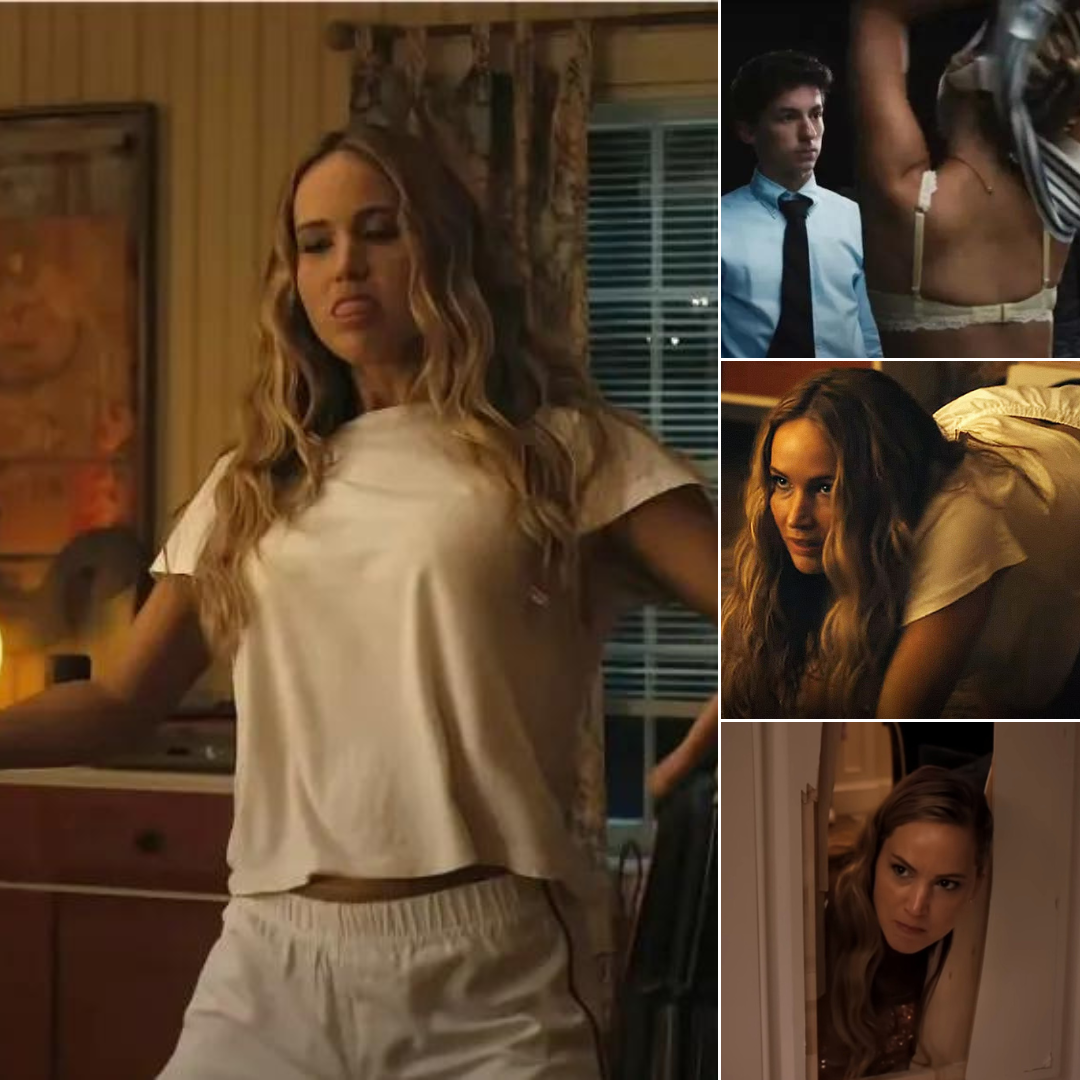One of my great great great grandfathers fought for the Union and survived the Battle of Antietam. After his infantry unit was wiped out, he hid under a heap of corpses. As a child, I often found myself thinking about a person doing what he did and then going on to live a normal life, or whatever was classified as normal in the late 1800s. I thought about him again watching Viggo Mortensen’s film “The Dead Don’t Hurt,” a movie that injects the sorts of monumental moments of suffering and violence that you’re used to seeing in more traditional, action-oriented Westerns into a tale that is mainly interested in the relationship between a man, a woman, and a child, and the intrigue among various characters who live in the nearest small town.

Written, directed and scored by Mortensen (in his second venture behind the camera, following the contemporary family drama “Falling”), and set before and during the US Civil War, “The Dead Don’t Hurt” has standard genre elements, but treats them as a way into something different than the usual. There’s a sadistic psychopath who dresses in black, some rich men who lord their power over a Southwestern town, a goodhearted and soft-spoken sheriff, his steely wife, their beautiful, innocent son, and other variations on types that you tend to encounter in movies set during this period of US history. But there are no stagecoach or train robberies, quick-draws at high noon, extended gunfights, dynamite explosions, etc. There is violence of various kinds, and it’s presented realistically and unsparingly, but not at such length that the movie seems to be getting off on pain. The pacing is what you would call “slow” if you don’t like the movie, “deliberate” if you do.
Mortensen stars as Holger Olsen, a Danish immigrant who ends up as the sheriff of a small town in the American West. He lives in a tiny cabin in a canyon. I won’t tell you exactly where the movie begins or ends because it’s nonlinear, and accounting for things in the manner of a linear timeline would give a false impression of the movie and spoil important moments. Suffice to say that Holger goes to San Francisco and meets Vivienne Le Coudy (Vicky Krieps), a French Canadian flower seller, and takes her back to his cabin, where she overcomes her disappointment at his bare bones lifestyle and tries to build a life for them and the son they will eventually raise together.

At the same time, the movie keeps returning to the aforementioned town, which is controlled by an arrogant businessman named Alfred Jeffries (Garret Dillahunt), his violent, entitled son, Weston (Solly McLeod), and the town mayor Rudolph Schiller (Danny Huston), who controls most of the local real estate, plus the bank. There’s tension surrounding the ownership of a saloon that’s tended by an eloquent barkeep-manager named Alan Kendall (W Earl Brown). A shootout depicted early in the movie passes the saloon into the hands of the Jeffries family. Vivienne ends up working there. Weston takes a fancy to her, and doesn’t respond well to being told he can’t have her.

I mentioned earlier that this is a nonlinear movie and I’m mentioning it again here just in case you think there’s any standard cause-and-effect dynamic at work. It takes a while to get used to how the story is told. Mortensen’s script deliberately confounds the way our moviegoing brains are typically asked to function. He starts near the end of his story and moves from the present tense into different parts of the past as needed. Time-shifts are not tied to plot or even theme. They seem as intuitive as brushstrokes in a painting.
There are also flashbacks to Vivienne’s childhood, wherein she lost her father to war against the English—a trauma that sparks a dream or fantasy about a knight in armor riding through a forest. This image connects to the midsection of the movie, which is where Holger impulsively decides to enlist in the Union army to go off and fight against slavery and earn a promised enlistment payment, leaving Vivienne alone in that tiny house in the canyon. This might strike contemporary viewers as a casually callous thing to do, but it’s the kind of thing that happened plenty back then, and tends to be described in family histories with a sentence like, “Then he went off to fight in the war and came home a year later.”

The writing and acting of all the characters is intelligent and measured. You get a sense of a complete person who lived a full life offscreen even when you’re observing a character who only has a few judiciously chosen moments, such as Brown’s character, who is a bit too pleased with his own eloquence but sometimes seems ashamed after he verbally runs roughshod over others; or a judge played by Ray McKinnon who presides over the trial of a citizen wrongly accused of a horrible crime, and carries on as if God guides his gavel (a pistol butt); or a reverend played by veteran character actor John Getz (of “Blood Simple” and “The Fly”) whose community role requires him to oversee an execution whether it’s justified or not. (Brown, Dillahunt and McKinnon were all on the HBO Western “Deadwood,” a go-to casting resource for this type of project; it’s a treat to see them fully inhabit very different characters from ones they’ve played in the past.)
ADVERTISEMENT
None of the characters unveil themselves as you might expect. Holger initially comes across as a Clint Eastwood-style, strong-silent he-man archetype, but he’s less decisive, more sensitive and learned. We often see him reading books or writing in a journal or on parchment. He dotes on Little Vincent (Atlas Green), his son with Vivienne, with a sensitivity and physical warmth that’s unusual in male-dominated films like this. His relationship to the Western hero code that’s often summed up as “doing what a man’s gotta do” is complicated as well. Olsen makes a lot of decisions that would result in negative comments on audience preview cards at a focus group screening (hard to imagine Mortensen doing one) because they are, to say the least, not things that a typical Western action hero would do. They’re more like what a real person with a complicated psychology would do—things he might regret in hindsight.
Krieps, who broke out with “Phantom Thread,” is the true star of this movie, even though it’s bracketed by Mortensen’s character riding out on a long journey. She’s the only character who gets flashbacks and dreams. She threads the needle of making her character seem self-assured, tough, and self-respecting yet never anachronistically “feminist,” in the contrived, phony way that a lot of period pieces feel obligated to write female characters of earlier times. Though unassuming in how she applies technique, Krieps is a deep and substantive film star, in the tradition of actresses from earlier eras like Liv Ullmann and Ingrid Bergman. She makes a connection with the viewer. You can feel the hope drain from Vivienne when she keeps a stiff upper lip during awful experiences that she has no control over. But you also feel the resolve when she makes the best of a bad situation, and the excitement that blossoms in her when she’s treated as a person of value.
ADVERTISEMENT
Not too many filmmakers have ever made movies like this, and when you do come across one (such as Sam Peckinpah’s “The Ballad of Cable Hogue” or the Charlton Heston movie “Will Penny”, or “Deadwood”, or the 1970s movie “The Emigrants”) it stands out, in part because it avoids the predicable, ritualized high points that the genre is built upon, and instead concentrates on significant moments of interaction between characters who do not have a 20th or 21st century mindset superimposed on them. The lack of pandering to contemporary sensibilities means that all the characters remain slightly at a remove from us throughout the story. It also means that they come across as more real. Yes, certain aspects of the human experience are universal and have never changed. But there is a huge difference across time periods in how individuals understand themselves and each other, and this is a rare movie that respects that.
ADVERTISEMENT
The movie also has a genuinely cinematic instinct for when to linger on a moment and when to cut around it, or allude to it as something that occurred offscreen. A lot of the longer sequences are just extended interactions between the film’s two romantic leads, who have a pleasing banter but derive a lot of their chemistry from looking at each other with resentment, yearning, gratitude, or disappointment. You almost never get to see material of this sort play out at length in a film set in the American West. Or any kind of film.
Mortensen is 65 now, three years older than Eastwood when he made “Unforgiven,” and the entertainment industry is even less hospitable to Westerns now than it was three-plus decades ago, so it’s tough to imagine him making more movies like this one. But he might turn out to be one of the great Western directors if he did.





